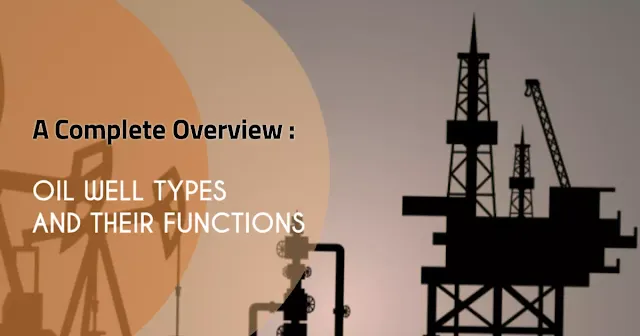Oil Well Types and Their Functions: A Complete Overview
Explore the comprehensive overview of oil well types and their functions. Delve into the diverse roles each type plays in the oil and gas industry, from exploration to production.
When it comes to the world of oil and gas extraction, the role of different types of oil wells is crucial. From uncovering untapped resources to powering our energy-hungry world, these wells play a significant part in the intricate process.
In this detailed article, we delve into the diverse categories of oil wells and their functions, shedding light on how each type contributes to the exploration, development, and production of these valuable resources.
Types of Oil Wells
There are several types of oil wells commonly used in the oil industry to extract crude oil from reservoirs beneath the Earth's surface. Some important types of oil wells include:
1. Exploratory Wells: Unveiling the Unknown
Exploratory wells, also known as wildcat wells, are the pioneers of the oil and gas industry. These wells are drilled in uncharted territories, where no known reserves exist. Their purpose? To unlock the secrets hidden beneath the Earth's surface.
Exploratory wells venture into regions where geological data suggests the potential presence of hydrocarbons. These wells serve as the pathfinders, determining if viable reservoirs are lurking below and paving the way for future development.
2. Appraisal Wells: Measuring Potential
Once an exploratory well strikes hydrocarbons, the journey doesn't end there. Appraisal wells step in to assess the richness of the find. These wells gather crucial information about the size, depth, and quality of the reservoir.
By meticulously studying the characteristics of the reservoir, engineers and geologists can estimate the reserves' commercial viability. The data collected from appraisal wells is instrumental in making informed decisions about the feasibility of further development.
3. Development Wells: Tapping into Success
Development wells take center stage after exploratory and appraisal stages. Situated in proven oil or gas fields, these wells mark the beginning of commercial production.
Designed with precision, development wells extract hydrocarbons from the reservoir and bring them to the surface. These wells are the lifeline of the energy industry, channeling the valuable resources that fuel economies and power industries.
4. Vertical, Horizontal, and Everything In Between
Vertical wells, as the name suggests, plunge straight into the reservoir. They're the go-to choice in areas where reservoirs are shallow or hydrocarbons are evenly spread. On the other hand, directional wells take a slanting path, enabling access to otherwise hard-to-reach reserves.
Horizontal wells offer a unique twist, starting vertically and then curving within the reservoir. This maximizes contact with the reservoir, boosting production rates significantly.
5. Multilateral Wells: A Maze of Possibilities
Multilateral wells take complexity to a new level. With multiple branches branching off a single wellbore, they efficiently drain distinct parts of a reservoir. This technique optimizes recovery and extraction, enhancing the overall efficiency of the operation.
6. Offshore vs. Onshore: Beneath the Waters and on Solid Ground
Offshore wells thrive in bodies of water, strategically positioned on platforms or floating vessels. They come in various forms, serving the purpose of tapping into offshore reserves.
Onshore wells, in contrast, are drilled on solid land. The choice between offshore and onshore wells hinges on factors like accessibility, cost, and environmental considerations. READ: Onshore vs. Onshore : Process, advantages, and global impacts.
7. Injection Wells: A Push for Efficiency
Injection wells are the unsung heroes of reservoir management. Fluids like water, steam, or gas are injected into the reservoir to maintain pressure and optimize production. This technique displaces oil towards production wells, enhancing recovery rates and extending the life of the reservoir.
8. Production and Abandonment: From Extraction to Rest
Production wells take center stage when it's time to reap the rewards. They extract oil or gas from the reservoir and bring it to the surface for processing, marking the culmination of the exploration and development process.
However, like all things, the journey comes to an end. Abandoned wells, once productive or economically viable, are sealed to prevent any adverse environmental impact or safety risks.
In conclusion, the world of oil wells is a diverse and complex realm. Each type of well serves a specific purpose, contributing to the intricate process of exploring, developing, and producing oil and gas resources.
Factors like reservoir characteristics, location, and desired production rates guide the selection of the appropriate well type. From delving into the unknown to powering our modern lives, these wells are the backbone of an industry that fuels progress and innovation.
(gasinergy.com)

